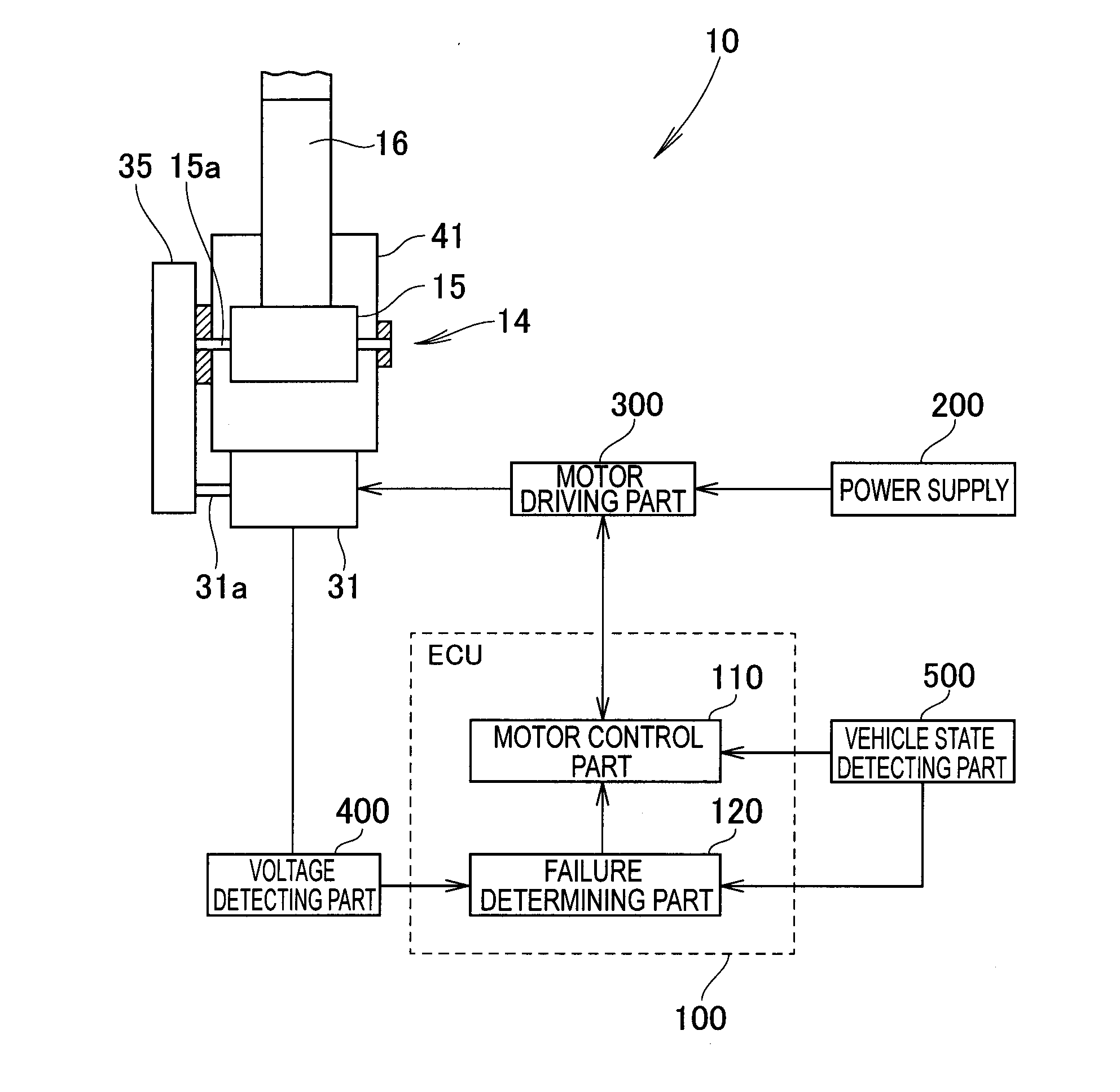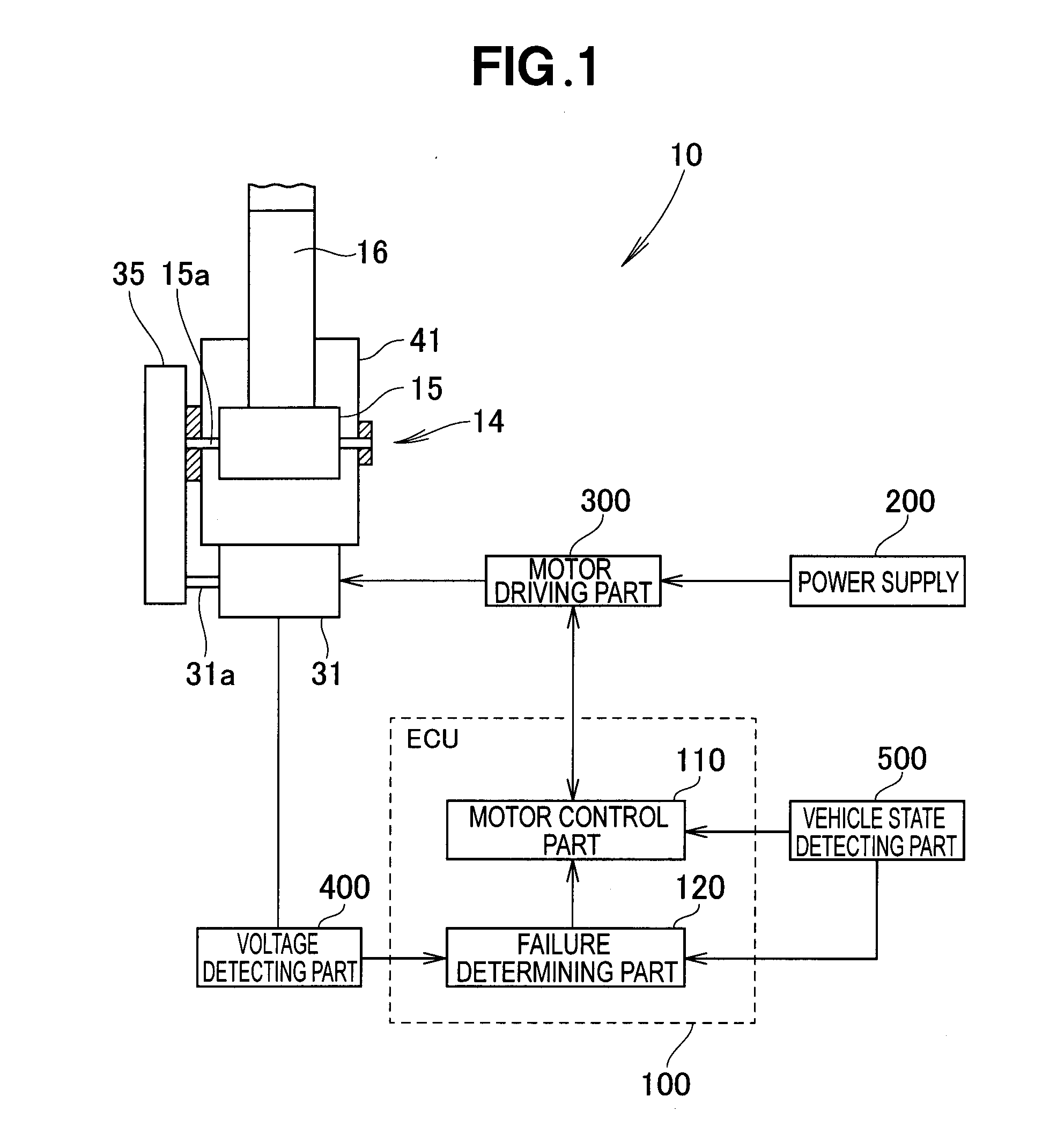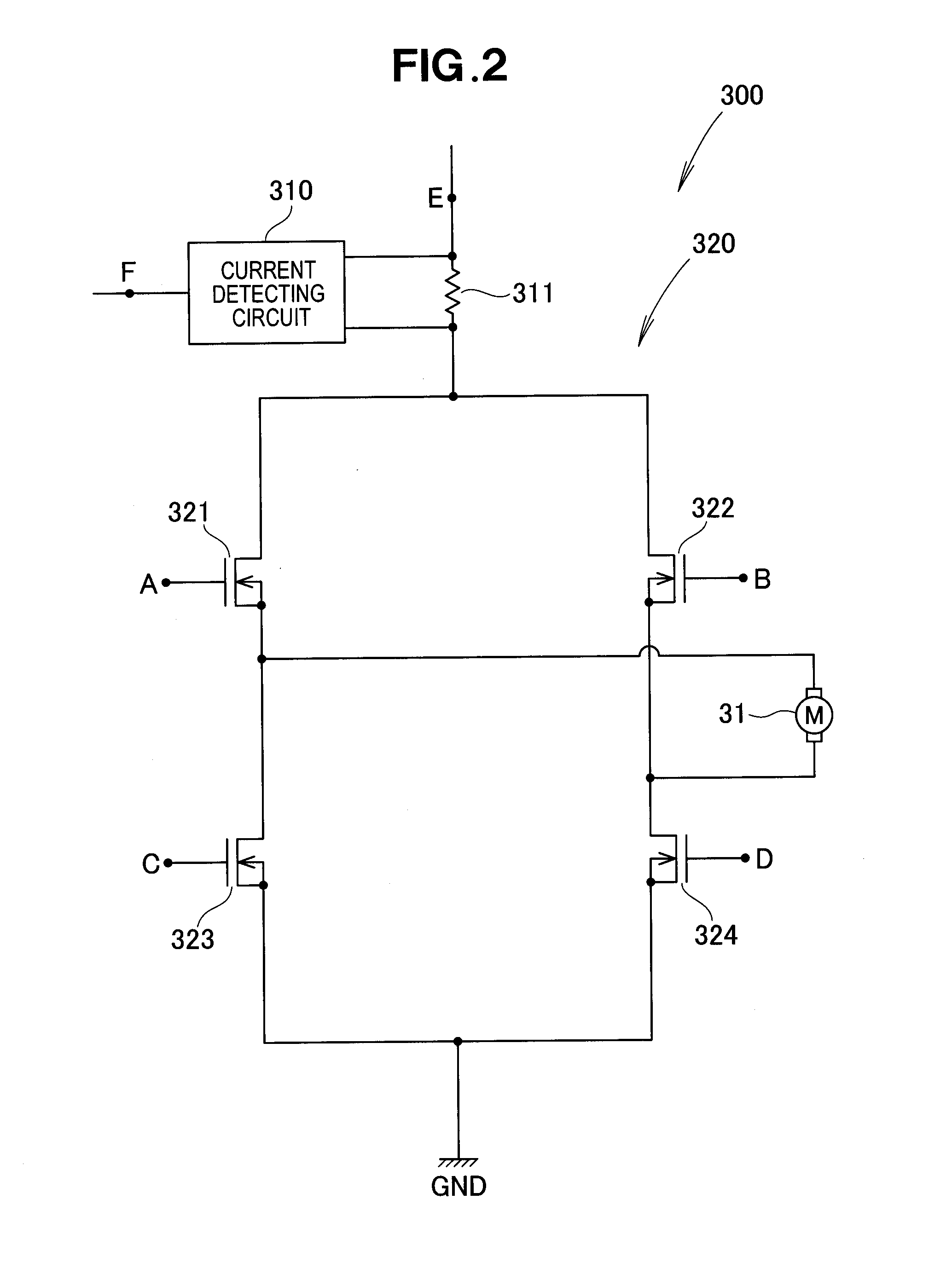Seat belt device
a seat belt and seat belt technology, applied in the direction of process and machine control, instruments, pedestrian/occupant safety arrangement, etc., can solve the problem that the passenger cannot be restrained by a seat belt, and achieve the effect of reducing cost and increasing reliability of seat belt device 10
- Summary
- Abstract
- Description
- Claims
- Application Information
AI Technical Summary
Benefits of technology
Problems solved by technology
Method used
Image
Examples
embodiment 1
[0053]FIG. 8 is a flowchart showing a failure diagnosing process for the electric brush motor 31 according to Embodiment 1. In FIG. 8, the motor control part 110 of the ECU 100 first determines an operation mode of the vehicle based on an output from the vehicle state detecting part 500. More specifically, it is determined whether the vehicle is operating in a comfort mode in which the buckle has shifted from a non-fitted state to a fitted state and an action to take up a slack of the webbing has been detected in a condition where acceleration equal to or more than a predetermined value is not generated on the vehicle (Step S101).
[0054]When the motor control part 110 determines that the vehicle is operating in the comfort mode (“YES” determination in Step S101), the failure determining part 120 receives a terminal voltage of the electric brush motor 31 measured by the voltage detecting part 400 (Step S102) and determines the presence or absence of a ripple noise on the basis of a wa...
embodiment 2
[0065]FIG. 10 is a flowchart showing a failure diagnosing process for the electric brush motor 31 according to Embodiment 2. The motor control part 110 of the ECU 100 first determines an operation mode of the vehicle based on an output from the vehicle state detecting part 500 in the same manner as in Embodiment 1 (Step S201). When the motor control part 110 determines that the vehicle is operating in a comfort mode in which the buckle has shifted from a non-fitted mode to a fitted mode and an action to take up a slack of the webbing has been detected in a condition where acceleration equal to or more than a predetermined value is not generated on the vehicle (“YES” determination in Step S201), the failure determining part 120 receives a terminal voltage of the electric brush motor 31 measured by the voltage detecting part 400 (Step S202) and determines the presence or absence of a ripple noise on the basis of a waveform of the received terminal voltage (Step S203). The ripple-noise...
PUM
 Login to View More
Login to View More Abstract
Description
Claims
Application Information
 Login to View More
Login to View More - R&D
- Intellectual Property
- Life Sciences
- Materials
- Tech Scout
- Unparalleled Data Quality
- Higher Quality Content
- 60% Fewer Hallucinations
Browse by: Latest US Patents, China's latest patents, Technical Efficacy Thesaurus, Application Domain, Technology Topic, Popular Technical Reports.
© 2025 PatSnap. All rights reserved.Legal|Privacy policy|Modern Slavery Act Transparency Statement|Sitemap|About US| Contact US: help@patsnap.com



